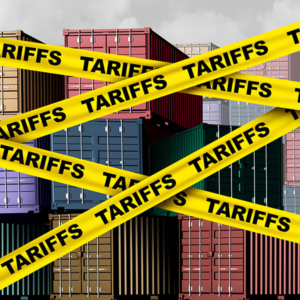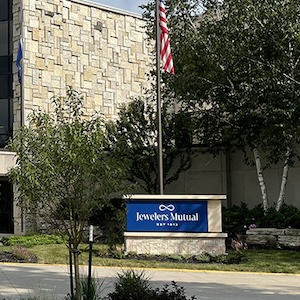
In This Episode
In this edition of The Jewelry District, you’ll hear JCK editor-in-chief Victoria Gomelsky and news director Rob Bates talk with Alexander Lacik, CEO of Pandora. They discuss how Alexander got into the jewelry industry, the trouble Pandora was having back in 2017 and how the company has been working to recover, and the effect of COVID-19 on its e-commerce business.
Listen Now
Show Notes
00:52 Victoria and Rob introduce guest Alexander Lacik, CEO of Pandora.
04:35 Alexander details the trouble Pandora was in before he came aboard.
10:03 Rob asks Alexander why he thinks Pandora charms took off in the first place.
11:47 Alexander is asked about the company’s efforts to market to Gen Z.
13:54 Victoria asks about Pandora’s e-commerce initiatives, and then they talk sustainability.
Episode Credits
Hosts: Rob Bates and Victoria Gomelsky
Editor: Olivia Briley
Producer and engineer: Natalie Chomet
Plugs: jckonline.com, @jckmagazine
Show Recap
Introducing Alexander Lacik
Alexander is the CEO of Pandora. Before moving to Pandora, Alexander worked with a range of brands including Pringles, Vicks, Always, Olay, Pantene, Lysol, Woolite, Head & Shoulders, and more. After moving back to Sweden with his kids, he ended up working with Britex for a while before Pandora knocked on his door. He was excited to work with Pandora because it was a big Scandinavian international brand.
In Hot Water
Rob asks Alexander if, since he has worked on so many brands, Pandora is his first that is a discretionary category. Alexander says jewelry is more of a luxury item than other brands he’s served, but marketing any product is similar in some ways. Pandora was having some trouble in 2017, and that’s when it approached Alexander. Pandora’s cardinal issue? Fixing its brand relevance, as it had lost touch with its core audience. After a study with 30,000 people, Pandora realized product design wasn’t an obstacle. The problem was that the brand had lost a bit of its clarity and needed to redefine what it stood for.
Standing the Test of Time
Rob asks why Pandora took off in the first place, and why its charms continue to strike a chord with people. Alexander clarifies that Pandora did not create the idea of charm bracelets; they’ve been around for thousands of years. He says that it’s hard to determine why things become relevant in pop culture, but that marking milestones and celebrations in one’s life with a charm is what really drew people to the company. Now, Alexander says, Pandora is in a much better position than it was two years ago.
Who’s the Audience?
Rob asks if it’s important for Pandora to pull in younger consumers. Alexander says women are the biggest buyers, particularly those between 25 and 40 who have a large disposable income. But he believes that by 2030, 30% of jewelry will be bought by Gen Zers. Pandora is currently working to figure out what the difference is, if any, between marketing to millennials and Gen Zers, while still staying relevant to the market at large.
E-commerce Solidification and Sustainability
Victoria asks about the impact of COVID-19 on Pandora’s e-commerce business. Alexander says the company used to have 16 different e-commerce platforms globally, so the problem that it encountered was that if it wanted to upgrade something, it would have to do it 16 times over. Now, Pandora is working on shrinking the number of e-commerce platforms it has until it gets to one global platform. Victoria asks what issues Alexander is laser-focused on for the future. He says that Pandora wants to be more successful in China. He also thinks the digital transformation we’ve been seeing will continue. They all finish up the conversation by talking about sustainability: By 2025, Pandora plans to be carbon neutral and working with recycled precious metals.
(Photo courtesy of Pandora)
- Subscribe to the JCK News Daily
- Subscribe to the JCK Special Report
- Follow JCK on Instagram: @jckmagazine
- Follow JCK on X: @jckmagazine
- Follow JCK on Facebook: @jckmagazine







